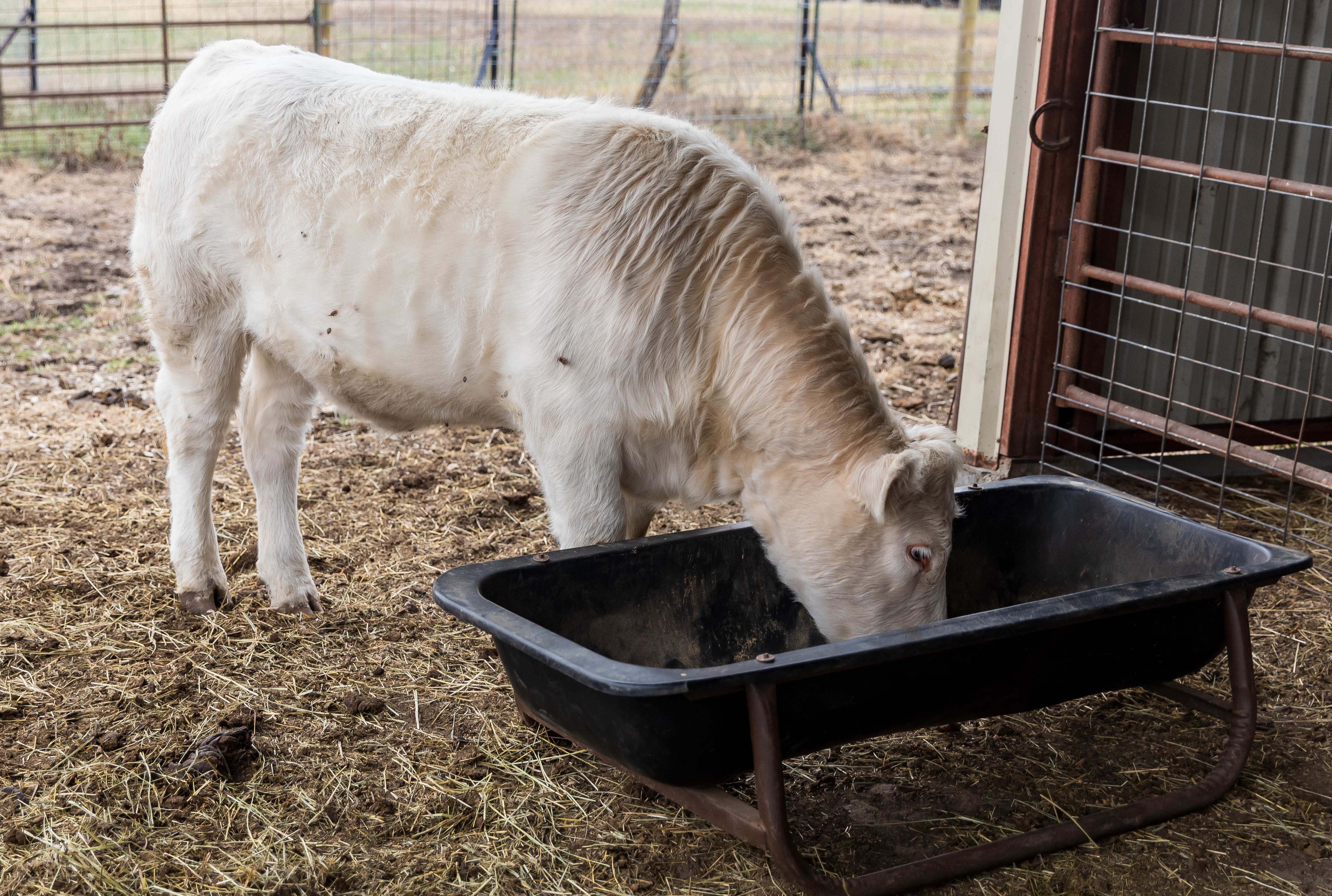
Charolais heifer eating from a feedbunk. | Download this photo.
Cattle Chat: Options for feeding hay to newly weaned calves
K-State cattle experts share advice on how to get calves to eat from the feedbunk
Sept. 5, 2023
By Lisa Moser, K-State Research and Extension news service
MANHATTAN, Kan. — When dining at a new restaurant and the eating utensil is unexpectedly chopsticks instead of a fork, it can make for a challenging experience.
Similarly, newly weaned calves also have to adjust when they transition from a pasture to a dry lot and are expected to eat from an unfamiliar feedbunk, said the experts at Kansas State University’s Beef Cattle Institute on a recent Cattle Chat podcast.
“Cattle need to know that there is feed in the bunk and if you just dump the concentrate in there they may not find it, so I recommend producers also put some long-stem hay in with the feed so the cattle see it,” said K-State beef cattle nutritionist Phillip Lancaster.
He also advises starting cattle out on high-quality hay.
“It will take calves two to three days to get adjusted to eating from the bunk,” Lancaster said.
Another decision that producers must evaluate is whether to deliver hay from a round bale feeder or grind the hay and mix it with the other feedstuffs, he said.
Lancaster and the other experts agree that there are pros and cons to that decision.
“Hay that has been mechanically chopped and offered as feed is a smaller particle size so it is more easily digested and will break down faster in the rumen than long-stem hay,” Lancaster said. “Because of this, cattle will consume more energy on a daily basis than they would if they were eating hay from a round bale.”
Cattle eating from a round bale will digest the hay slower and more of that will be absorbed in the digestive tract, he added.
“A downside of feeding hay from the round bale is that cattle will waste hay as they pick through the bale to eat and it ends up falling to the ground and getting stepped on,” said K-State veterinarian Bob Larson.
He added that the benefit of grinding the hay and adding it to the feed is that it is easier to control the portion size, especially in a limited feeding situation.
“Grinding the hay and mixing it with the concentrates allows me to control what they are eating,” Larson said.
While that is true, K-State veterinarian Brian Lubbers said there are drawbacks to grinding the hay.
“The downside to this feeding strategy is the cost of the equipment and the labor it takes to grind the hay and feed it,” Lubbers said.
But for producers who already have the equipment and labor available, the experts agree adding chopped hay to the ration is a good strategy.
“If I’ve got the ability to mix all my ingredients together, it is going to improve the feed efficiency of the calves,” Lancaster said.
To hear the full discussion, listen to the Cattle Chat podcast online or through your preferred streaming platform.

